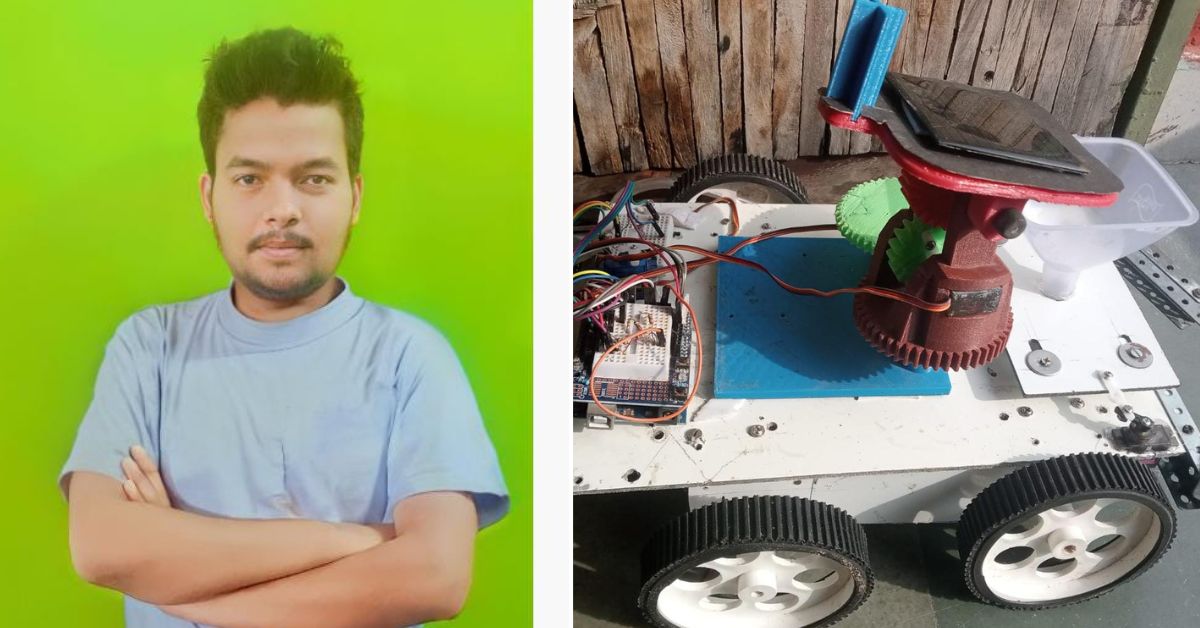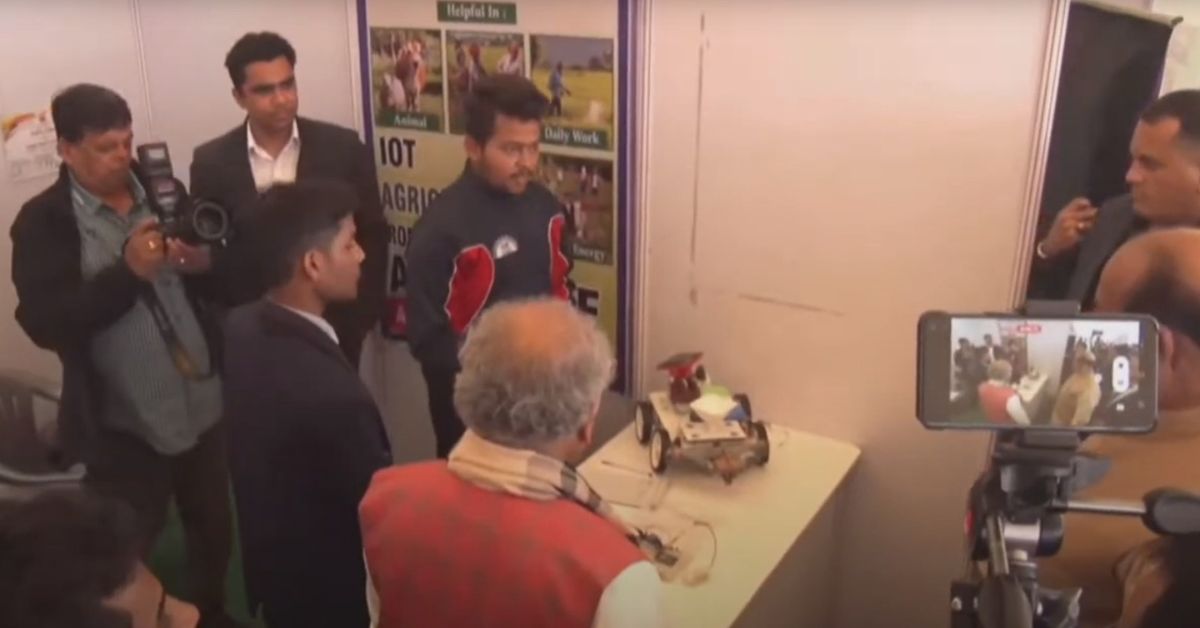Often, when we seek inspiration, we discover it in things right in front of us. Such was the case for Aryan Singh, the 18-year-old recipient of the Pradhan Mantri Rashtriya Bal Puraskar.
Aryan garnered applause for his innovative AgRobot—an AI-powered rover designed to assist farmers in analyzing soil, assessing crop health, and detecting signs of pests and diseases.
Aryan was one of the awardees, comprising nine boys and ten girls from 18 states and union territories, who received the award from President Droupadi Murmu at a ceremony at Vigyan Bhavan in New Delhi on January 22.
My innovation is my way to support the hardworking farmers of our country who tirelessly cultivate the food we consume. I feel deeply honoured to witness the robot being recognised by so many,” he shares in a conversation with The Better India.
So, what motivates an 18-year-old to develop an award-winning robot? Aryan explains in detail.
Necessity is the mother of invention
While most of his peers would sneak ways out of their study time to play, Aryan would go on the internet to search for the newest technology in the world.
Born and raised in Kota, Aryan hails from a farming family. “I was born surrounded by farmers, gaining a real-time experience of their lives. They face numerous challenges and engage in manual labour to put food on the table,” he shares.
Closely observing his family’s lives through problems such as lack of innovation on the field, crop failure due to diseases and climate change, Aryan’s young mind would look for solutions.
“Even if there are machines and innovations to prevent diseases, monitor the crop and kill the pests, they are unaffordable for most farmers. Many try to take loans and keep repaying it, going deeper into the circle of poverty,” he says.
“I wanted to create something affordable, compact and solve more than one problem for the farmer,” he says.

While it could have been a passing thought for Aryan, the COVID-19 pandemic gave him much more time to think.
“I was in 10th standard when I came about this idea. Thanks to the lockdown, I had plenty of time to read up about things and design my model. I was very young, so I knew there could be a solution but I was not aware of the technology available in the world,” he says.
“My interest continued to grow, leading me to pursue a B.Tech degree. This choice significantly enhanced my understanding of how machines and artificial intelligence operate,” he explains.
Moreover, the academic environment provided him with a platform to collaborate and seek assistance. “The college offers well-equipped labs and professors with extensive knowledge.”
After nearly three years of research, Aryan successfully developed the first prototype of Agrobot in 2023.
During this period, he had already established a company named Mera Saathi Pvt Ltd.
About the AgRobot
Once Aryan had a vision what he looked for was financial support. “I reached out to Istart — a flagship initiative by the Rajasthan government for startups in Rajasthan that works to foster innovation, to get financial help. They incubated me and I got a place to work, labs and support from them,” he says.
“Similarly, I also reached out to the government via Atal Innovation Mission for support. Additionally, I also got a lot of support from my college in terms of research space and support from professors,” he says.
Talking about the various unique features of his robot, Aryan says, “One of the unique features of the robot is that it can analyse the crop’s condition. It has cameras installed and when it moves on the field it can analyse the crop in real time. There is also a dropper on the top which helps in spreading the seeds in the field, reducing manual labour for the farmer.”
He continues, “There are also soil moisture sensors that help farmers to analyse the soil and look for any pests in them. The dropper can also be used for irrigating the field and spraying pesticides if needed.”
The analysis of the soil and the crop is done using Artificial Intelligence which is trained using different farming data.
“Using IoT, we have made the robot remotely controllable. For instance, if you want to use the robot from Jaipur city and your crops are in Kota, you can simply log in to the application that I have developed and use it,” he says.

Additionally, the robot is fully run on solar energy. “There is a piezoelectric panel installed in it that uses pressure to produce electricity. For instance, the pressure created on the tyres and the panel will produce electricity that can be stored in the batteries for use when the sun is down,” he says.
“So this creates a chain of power, once the solar energy is exhausted you can switch to a piezoelectric panel. The robot will not need any external source whatsoever to work,” he says.
The robot has garnered a lot of attention and Aryan has already set up a company to commercialise the robot.
“My aim is to reach each and every hardworking kisan of the country. I am planning to commercialise the robot to make it more accessible to the farmers.”
Recalling an incident at Krishi Mela in Kota, Aryan says, “There were a lot of innovators around me and I was very nervous. But the robot garnered so much attention that hundreds of people, mostly farmers, visited my stall and showed interest in my work. Narendra Singh Tomar, who is an MLA visited my stall and congratulated me on my innovation,” he says.
“It feels surreal but I am glad that I could bring such an innovation for the farmers,” he says.
(Edited by Padmashree Pande; All images courtesy: Aryan Singh)
No comments:
Post a Comment